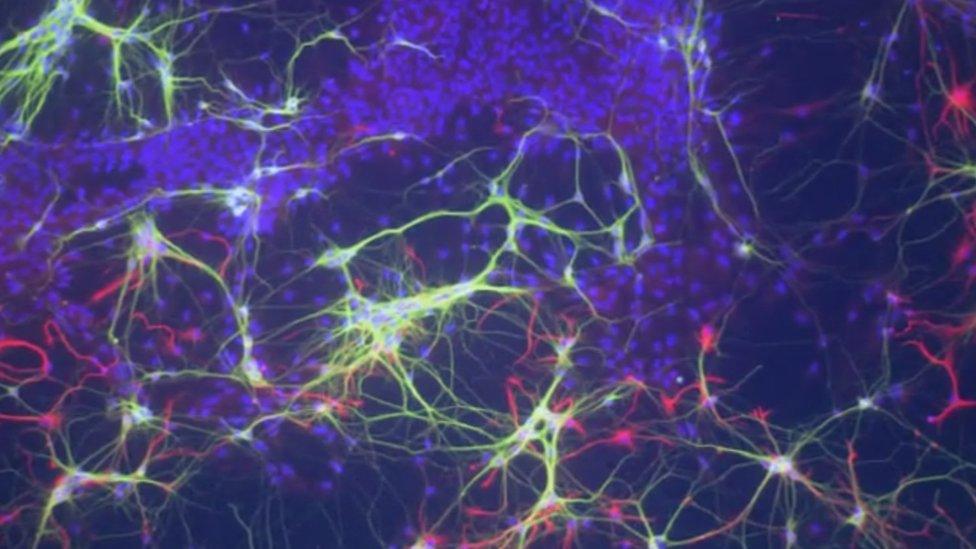'Dead or alive' cat in physics top 10
- Published

Artwork: The famous paradox imagines a cat that is simultaneously alive and dead
The detection of ripples in space-time and a famous cat-based paradox are featured in a list of the physics advances of 2016.
The discovery of gravitational waves, announced in February, was declared breakthrough of the year.
But the top 10 list, compiled by Physics World, external magazine, also features a new twist on the much-loved Schrödinger's Cat idea.
It also included the detection of a planet around our nearest star.
The winning discovery was the result of work by the Ligo collaboration, which involved more than 80 institutions worldwide.
Ligo operates several labs around the world that fire lasers through long tunnels, trying to sense warping in the fabric of space-time.
The first signal was generated by the collision of two black holes more than a billion light-years from Earth.

Artist's impression: The existence of gravitational waves was first proposed by Albert Einstein
"What's been achieved by Ligo, particularly in a relatively short space of time, is truly incredible," said Hamish Johnston, the editor of Physics World.
"The observations it has made are the first direct evidence of the existence of black holes, so Ligo has already changed our view of the Universe."
In no particular order, the nine other achievements are as follows:
Schrödinger's Cat: The well-known paradox presents the idea of a cat in a box that may be simultaneously alive and dead. The scenario was designed to illustrate some principles of the weird world of quantum physics. It is an example of quantum superposition, where particles can be in two different states at once. A US-French team created two microwave cavities (the boxes), while the cats were represented by large ensembles of photons. In a twist to the tale, the team showed that the "cat" can be in two separate locations at the same time, external.
Compact "gravimeter": University of Glasgow scientists built a gravimeter - which can make very precise measurements of Earth's gravity - that is both inexpensive and small. The device could be used in mineral exploration, civil engineering and for monitoring volcanoes.
Nearest neighbour: Astronomers discovered evidence for a rocky exoplanet within the habitable zone of Proxima Centauri, the nearest star to our Solar System. The alien world, called Proxima b, is about 1.3 times the size of Earth and could - in theory - sustain liquid water on its surface.

Artwork: Proxima b's mass suggests it is a rocky world like Earth
Entanglement: An international team created and measured a phenomenon called quantum entanglement between two different types of ion - a charged atom or molecule. The discovery could help show the way towards super-fast quantum computers.
Wonder material: Scientists measured a property called negative refraction in the promising material graphene, external. Negative refraction could be used to create new types of optical devices such as very powerful lenses.
Nuclear clock: German physicists detected an elusive transition in the element thorium-229 which could allow the development of a "nuclear clock". Such a clock would be much more stable than the conventional atomic clocks in use today.
Amazing lens: A team at the University of Strathclyde in Scotland created a new microscope lens, external, called the Mesolens, that offers the unique combination of a large field of view with high resolution.

These structures in the brain of a rat embryo were imaged using the Mesolens, developed at the University of Strathclyde
Fast computing: Quantum computers could herald a technological revolution, but scientists have to overcome many hurdles before they can produce "real world" devices. In 2016, Austrian scientists used a quantum computer to simulate the physics that describes fundamental interactions between sub-atomic particles - a significant development in this field.
Tiny engine: A team at the University of Mainz in Germany created a heat engine based on just one atom. It converts a difference in temperature to mechanical work by confining a single calcium ion in a funnel-shaped trap.
Follow Paul on Twitter., external